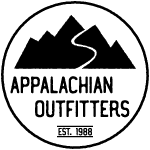What are the best sleeping bags for each season? Temperature and humidity will greatly affect your choice of sleeping bag, and these two factors themselves are highly dependent on the current season. In winter, the temperature rating of your sleeping bag needs to guarantee enough protection from the cold to ensure comfortable sleeping conditions. In contrast, lightweight sleeping bags are more appropriate for late spring and summer camping. For the ultimate breakdown of factors to consider when choosing seasonal sleeping bags, read on.
Understanding Sleeping Bag Temperature Ratings for Comfortable Sleep
Going camping in the wild involves shedding daily comfort in favor of contemplation in nature. Still, a good night’s rest is essential, meaning the humble sleeping bag has to make every hiker’s list of must-have camping essentials, no matter the season.
But grabbing the first one off the store shelf or rack and calling it a day won’t do. A lot more nuance goes into picking the right product, lest you end up with a poor-quality sleeping bag with pitiful insulation, leaving you shivering the night away.
To aid campers and backpackers with picking the best sleeping bag for the occasion, companies print temperature ratings on sleeping bags directly. These help you make an informed purchase by telling you exactly how the bag fared in a lab thermal performance test. Thanks to ISO standardization, the label provides accurate information regardless of the bag producer, so you don’t have to worry about companies inflating their scores artificially.
The value itself represents the lowest temperature at which you can use the bag to sleep comfortably. Most producers provide a comfort rating and a lower limit rating, with the former aimed at “cold sleepers” and the latter at “warm sleepers.” However, note that these values aren’t fully set in stone and are merely supposed to guide you when picking the best sleeping bag for your needs.
Best Sleeping Bags for Each Season
Having discussed the meaning behind sleeping bag temperature ratings, let’s get to the real question: what is the best sleeping bag for each occasion? Providing an accurate answer depends on a few factors. Primarily, though, the current season plays the most significant role. Let’s explore the best options for sleeping bags for each time of year.
Winter Sleeping Bag
In winter conditions, properly insulated camping gear is paramount to secure you against the biting cold. An extra draft collar could provide enhanced wind protection for further temperature optimization.
As for the temperature rating, sleeping bags for the winter offer heat retention capability in temperatures as low as below 10°F, though options between 20 and 30°F are far more common. Our options for the best sleeping bags by temperature rating are:
- Sea to Summit Alpine ApII – designed for arctic conditions where temperatures can fall as far as -5°F.
- NEMO Disco Men's 15 Endless Promise – with a temperature rating of 15°F, this sleeping bag made out of 100% recycled material will keep you snug and warm in severe climate conditions.
- Sea To Summit Trek Down – this sleeping bag can keep you comfortable and cozy in chilly to brisk temperatures of around 30°F, making it a reliable and versatile choice.
Spring & Fall Sleeping Bag
In the milder, more temperate interim between winter and fall, your sleeping bag still needs to provide ample protection and heat during colder nights while not suffocating you or compromising on comfort during warmer periods. As the weather might be rather unpredictable, these sleeping bags face the unique challenge of responding to fluctuating temperatures. They also need to protect you from moisture when camping in the rain.
As a result, the best sleeping bags for spring and fall rely on the versatility and adjustability of different elements. Detachable hoods, zippers for enhanced ventilation, and breathable insulation materials are frequently utilized to ensure complete comfort regardless of conditions
Typically, a good temperature rating for such conditions will lie in the range of 25 to 35°F. Furthermore, if you live in a region where temperatures rarely reach the extremes, you could opt for a 3-season sleeping bag with a slightly lower or higher temperature rating to meet your needs for either the summer or winter season as well.
Our men’s choice of sleeping bag in this category is the NEMO Men's Tempo 35. For women, we recommend the Sea To Summit Women's Journey - JoI. Both choices offer unparalleled comfort coupled with the versatility to remain adaptable to varying conditions.
Summer Sleeping Bag
Given that sleeping temperatures tend to reach more comfortable levels in the summer, you don’t really need that many bells and whistles in your choice of sleeping bag – lightness and breathability should suffice. Lightweight sleeping bags like the Sea To Summit Traveller - TrI are our go-to choice. With a temperature rating of 50°F, it’s light, highly compressible, and offers optimal comfort in both dry and damp conditions.
The Takeaway
Regardless of the time of year, a sleeping bag can make or break your trip. Devoting enough time to research sleeping bags can be one of the best seasonal hiking tips you could follow. Therefore, try to make an informed decision by broadening your knowledge on the topic. That way, you’ll ensure a proper night’s sleep on the trail, no matter the weather conditions.
You may also read: How to Choose the Perfect Hiking Boots: A Comprehensive Guide

